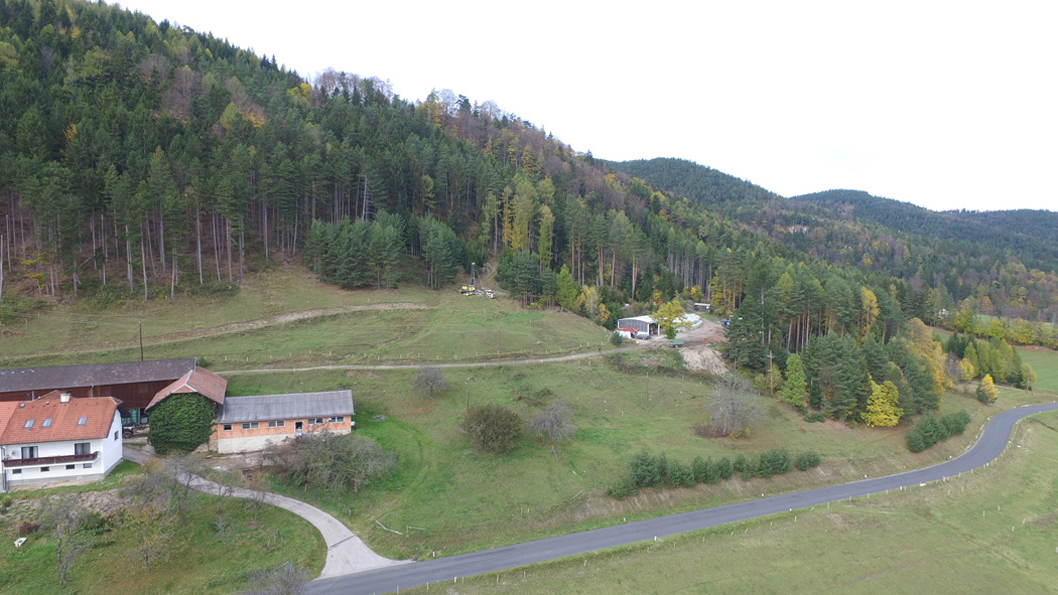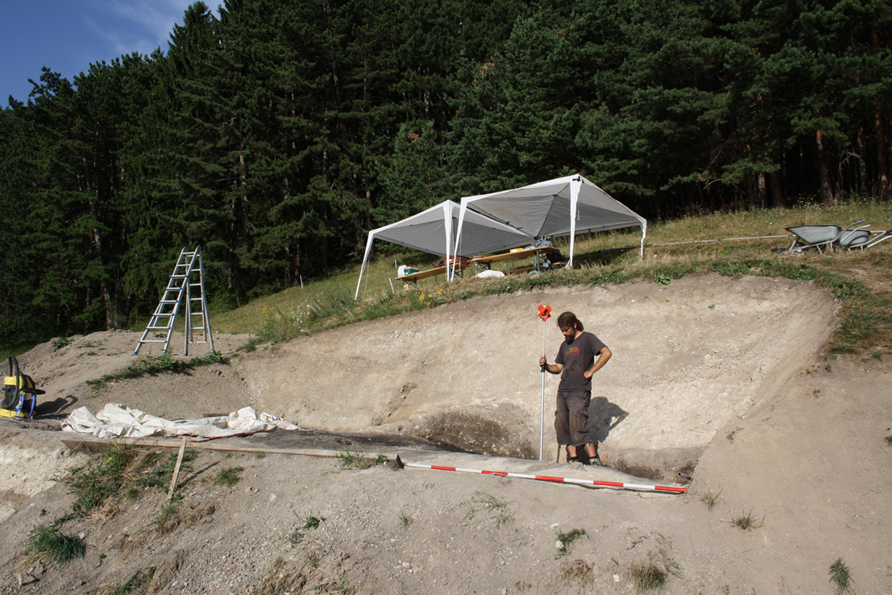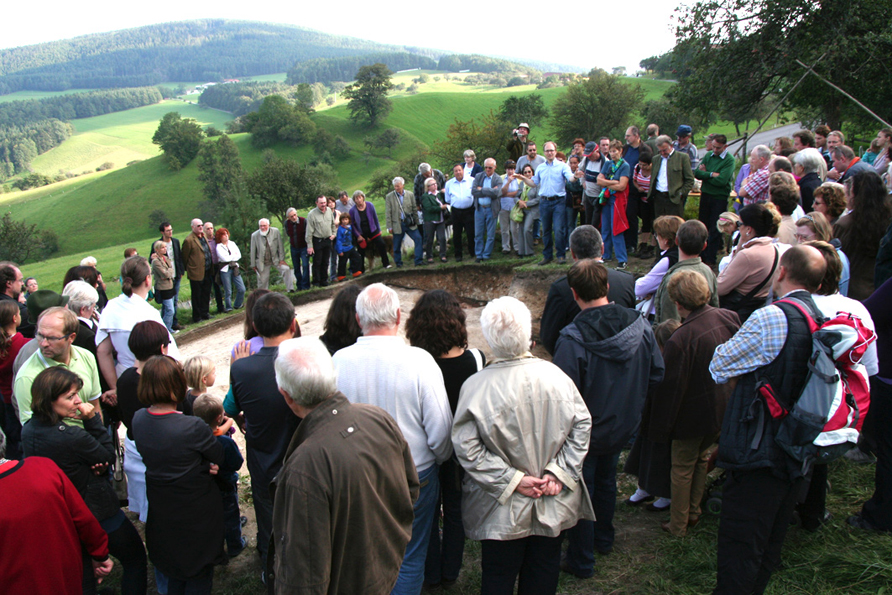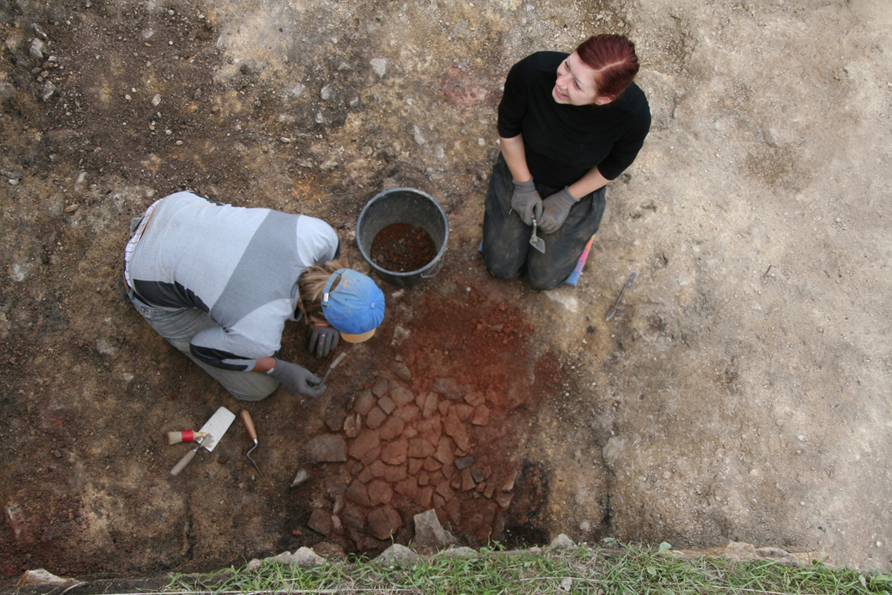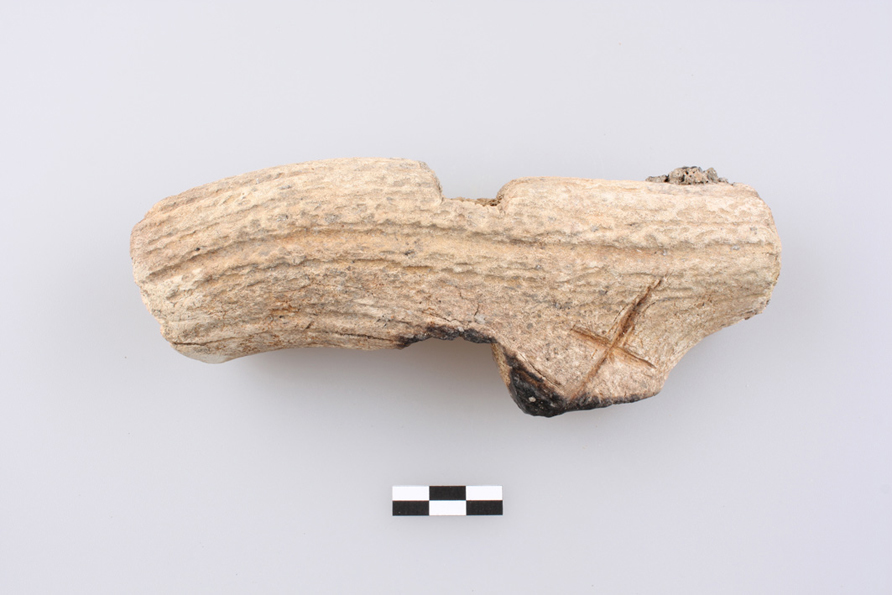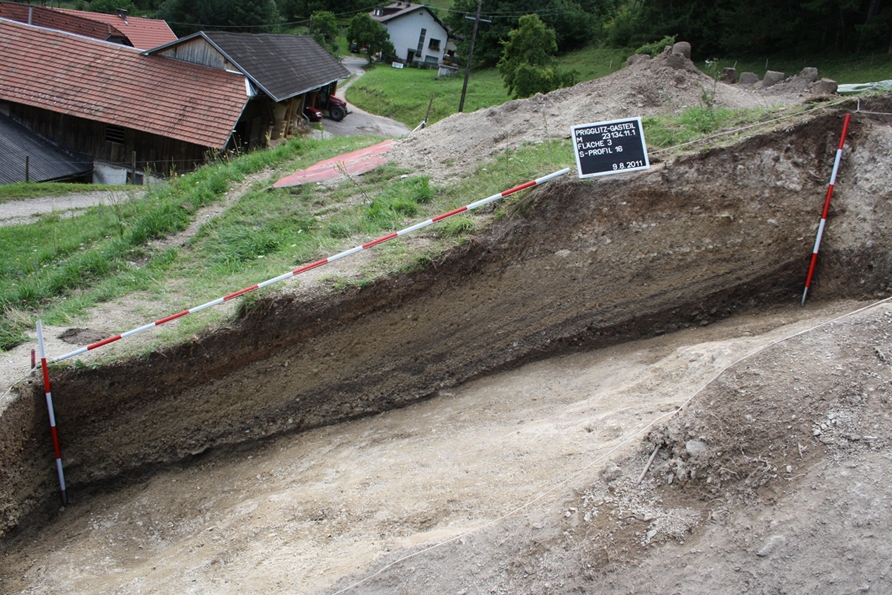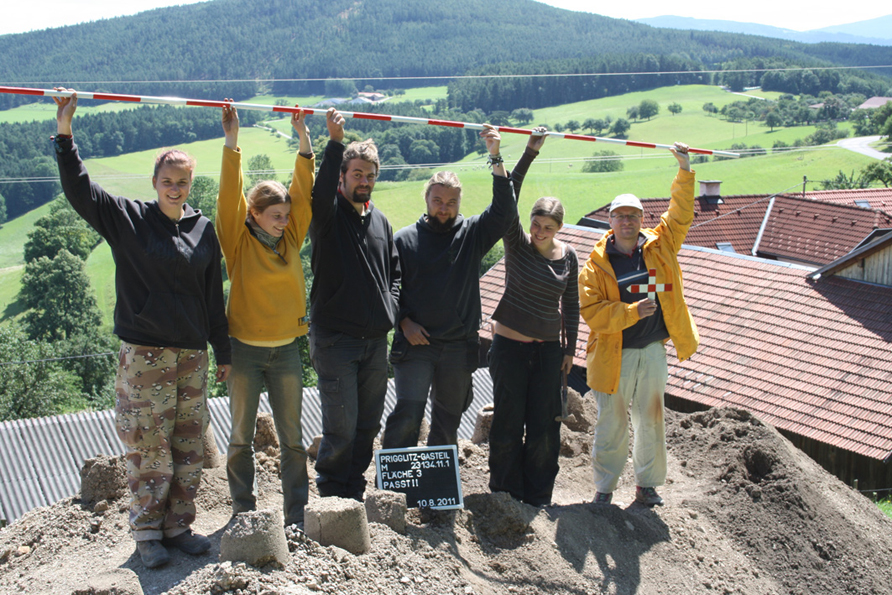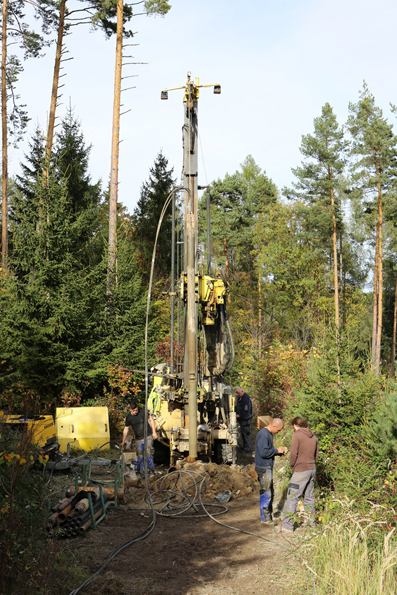Projects
Duration:
01.10.2017 - 30.09.2021

Funding:
FWF – Der Wissenschaftsfonds (P30289-G25)
Principal Investigator: Univ.-Prof. Mag. Dr. Peter Trebsche
Team:
Mag. Daniela Fehlmann, Michael Konrad BA (Donau-Universität Krems, Zentrum für Museale Sammlungswissenschaften)
Dr. Andreas G. Heiss, DI Silvia Wiesinger, DI Thorsten Jakobitsch (Österreichisches Archäologisches Institut)
Dr. Marianne Mödlinger (Institut de Recherche sur les Archéomatériaux, UMR 5060, Université Bordeaux, Frankreich)
Dr. Roderick Salisbury, Julia Längauer MA (VIAS, Universität Wien)
Life and Work at the Bronze Age Mine of Prigglitz
(Leben und Arbeit im bronzezeitlichen Bergbau von Prigglitz)
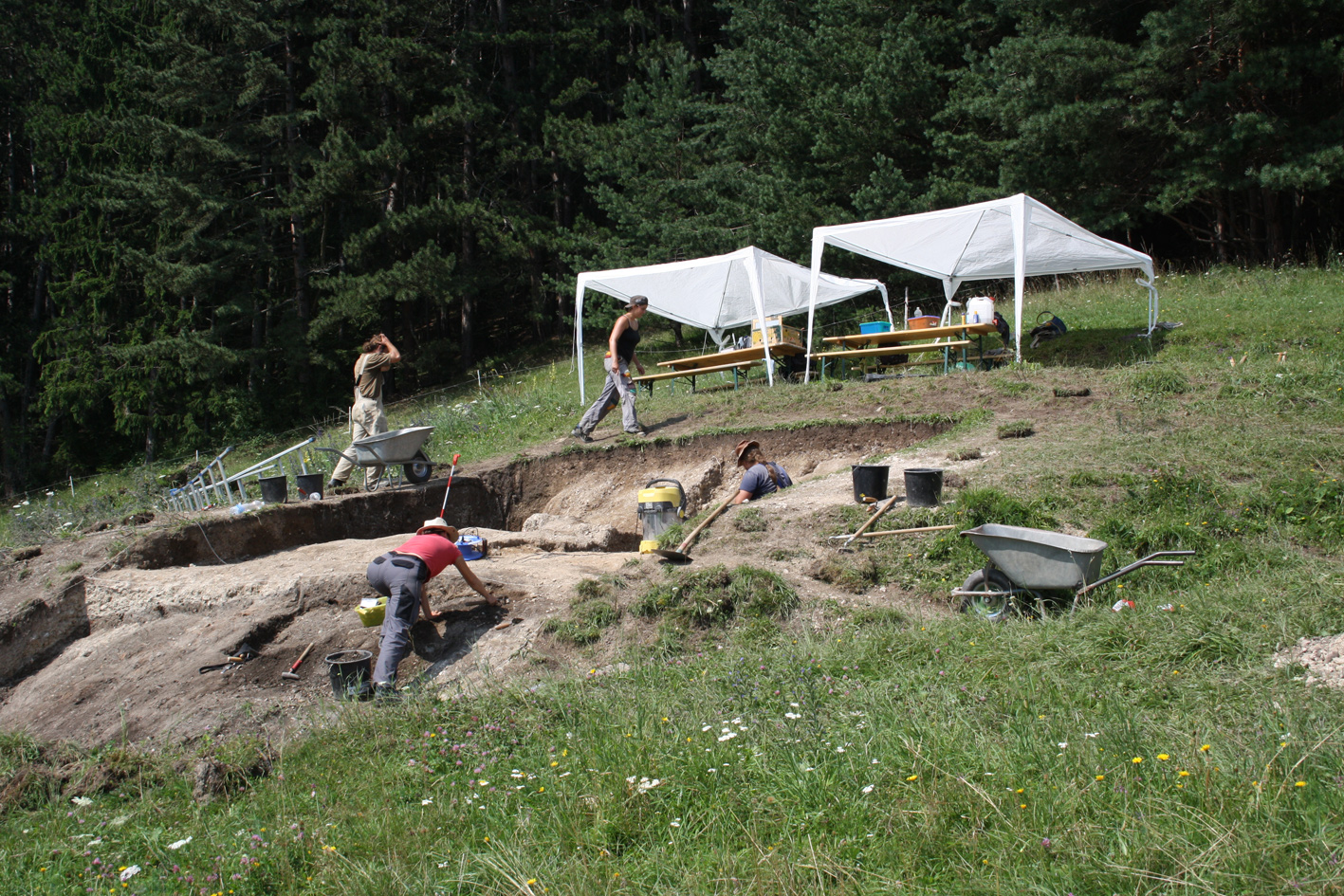
Project Results
At Prigglitz-Gasteil, located at the easternmost fringe of the Alps in Lower Austria, the excellently preserved remains of a Late Bronze Age copper mining site were excavated from 2010 to 2014. The aims of the subsequent research project (2017–2021) were to investigate the social organisation and the operation of an Alpine copper mine in order to improve our knowledge of prehistoric miners’ work and life in relation to the networks of communication and exchange.
As a result of our project, the Late Bronze Age site of Prigglitz-Gasteil can be characterized a regional centre of copper production and bronze working based on the evidence of an openwork copper ore mine and nearby bronze casting workshops. The copper ore mine was in operation from ca. 1050 BC to 780 BC. It produced very pure copper, smelted from chalcopyrite, which must have been sought after in the Late Bronze Age, when high-impurity copper alloys dominated in Central Europe. The Prigglitz copper was distributed in the surrounding region. Several hoards of casting cakes were discovered, whose chemical composition corresponds with the Prigglitz ores and copper finds.
Shortly after 920 BC, a mining subsidence occurred, and a landslide destroyed one part of the large opencast. This catastrophe did not interrupt mining activities but led to a change in the spatial layout of the workshops and dwellings associated with the mine that reflects a different work organisation. During the early period at Prigglitz (ca. 1050 to 920 BC), the mine had been operated continuously. The different work steps in copper production followed a strict spatial pattern. After the subsidence event (ca. 920 BC), all attested activities – like copper beneficiation, bronze working, butchering, food processing, textile, bone and antler working – alternated in rapid succession, at least on the two working terraces excavated, thus provoking the picture of a rather loose, uncoordinated organisation of the mine.
With the in-depth geophysical, archaeobotanical, archaeozoological and archaeometallurgical investigations performed during the project, the site of Prigglitz-Gasteil now provides abundant data for comparison with other interdisciplinary studies of copper mining sites in the Eastern Alps, like the Mitterberg, Kitzbühel and Schwaz-Brixlegg districts, and the salt mine at Hallstatt. As regards the mining technique, Prigglitz represents the first prehistoric large-scale opencast mine in the Eastern Alps that can be reconstructed thanks to the geophysical surveys, complemented with deep core drillings for ground-truthing. Thanks to intensive sampling, Prigglitz provided a wealth of charred plant remains, including processed food stuffs that were probably delivered to the mining site. Thus, for the first time, the plant-based cuisine and consumption practices of Bronze Age copper miners were investigated in detail
Projekt Report
Projekt Publications
Haubner/Strobl/Trebsche 2019: R. Haubner/S. Strobl/P. Trebsche, Metallographic analyses from the late Urnfield period copper mining settlement at Prigglitz-Gasteil in Lower Austria. In: R. Turck/T. Stöllner/G. Goldenberg (Hrsg.), Alpine Copper II - Alpenkupfer II - Rame delle Alpi II - Cuivre des Alpes II. New Results and Perspectives on Prehistoric Copper Production. Der Anschnitt Beiheft 42 (Bochum 2019) 323–332. PDF on Academia
Haubner/Strobl/Trebsche 2021: R. Haubner/S. Strobl/P. Trebsche, Analytical investigations on plate slags from the late Urnfield Period copper mining settlement at Prigglitz-Gasteil (Lower Austria). In: B. Török/A. Giumlia-Mair (Hrsg.), Proceedings of the 5th International Conference “Archaeometallurgy in Europe”, 19-21 June 2019, Miskolc, Hungary. Monographies Instrumentum 73 (Drémil-Lafage 2021) 205–218. PDF on Academia
Haubner/Strobl/Trebsche submitted: R. Haubner/S. Strobl/P. Trebsche, Materialographic investigations on plate slags from the Late Bronze Age copper production site of Prigglitz-Gasteil (Lower Austria). Journal of Archaeological Science – Reports, submitted 9.8.2022.
Heiss/Jakobitsch/Wiesinger/Trebsche 2021: A. G. Heiss/Th. Jakobitsch/S. Wiesinger/P. Trebsche, Dig Out, Dig In! Plant-based diet at the Late Bronze Age copper production site of Prigglitz-Gasteil (Lower Austria) and the relevance of processed foodstuffs for the supply of Alpine Bronze Age miners. PLoS ONE 16, 3, 2021, e0248287. https://doi.org/10.1371/journal.pone.0248287 open access; PDF on Academia
Jakobitsch/Wiesinger/Heiss/Faltner/Oeggl/Grabner/Trebsche 2022: Th. Jakobitsch/S. Wiesinger/A. G. Heiss/F. Faltner/K. Oeggl/M. Grabner/P. Trebsche, Wood use and forest management at the Late Bronze Age copper mining site of Prigglitz-Gasteil in the Eastern Alps – A combined anthracological, archaeological, and palynological approach. Journal of Archaeological Science: Reports 46, 2022, 103673.
https://doi.org/10.1016/j.jasrep.2022.103673 open access; PDF on Academia
Mödlinger/Trebsche 2020: M. Mödlinger/P. Trebsche, Archaeometallurgical investigation of a Late Bronze Age hoard from Mahrersdorf in Lower Austria. Journal of Archaeological Science: Reports 33, 2020, 102476. https://doi.org/10.1016/j.jasrep.2020.102476 open access; PDF on Academia
Mödlinger/Trebsche 2021: M. Mödlinger/P. Trebsche, Work on the cutting edge: metallographic investigation of Late Bronze Age tools in southeastern Lower Austria. Archaeological and Anthropological Sciences 13, 2021, article 125. https://doi.org/10.1007/s12520-021-01378-1 open access; PDF on Academia
Mödlinger/Trebsche/Sabatini 2021: M. Mödlinger/P. Trebsche/B. Sabatini, Melting, smelting, and recycling: A regional study around the Late Bronze Age mining site of Prigglitz-Gasteil, Lower Austria. PLoS One 16(7), 2021, e0254096. https://doi.org/10.1371/journal.pone.0254096 open access; PDF on Academia
Trebsche/Fehlmann/Konrad 2019: P. Trebsche/D. Fehlmann/M. Konrad, 12 urnenfelderzeitliche Bronzefunde = 1 Depot vom „Gelände“ bei Grünbach am Schneeberg? In: S. Hye/U. Töchterle (Hrsg.), UPIKU:TAUKE. Festschrift für Gerhard Tomedi zum 65. Geburtstag. Universitätsforschungen zur Prähistorischen Archäologie 339 (Bonn 2019) 559–569. PDF on Academia
Trebsche/Schlögel/Flores-Orozco 2022: P. Trebsche/I. Schlögel/A. Flores-Orozco, Combining geophysical prospection and core drilling: Reconstruction of a Late Bronze Age copper mine at Prigglitz-Gasteil in the Eastern Alps (Austria). Archaeological Prospection 2022, 1-21. https://doi.org/10.1002/arp.1872 open access; PDF on Academia
Trebsche/Weixelberger 2022: P. Trebsche/G. Weixelberger, A mining subsidence event around 920 BC in the Late Bronze Age copper mine of Prigglitz-Gasteil (Lower Austria). Archäologisches Korrespondenzblatt 52/1, 2022, 41–64. Open access; PDF on Academia
Online contributions
https://www.derstandard.at/story/2000124621591/essenslieferdienste-im-bronzezeitlichen-bergbau
https://science.orf.at/stories/3205545
Further publications
P. Trebsche/E. Pucher, Urnenfelderzeitliche Kupfergewinnung am Rande der Ostalpen. Erste Ergebnisse zu Ernährung und Wirtschaftsweise in der Bergbausiedlung von Prigglitz-Gasteil (Niederösterreich). Prähistorische Zeitschrift 88, 1–2, 2013, 114–151. DOI 10.1515/pz-2013-0004; PDF on Academia
P. Trebsche, Resources and nutrition in the Urnfield period mining site of Prigglitz-Gasteil in Lower Austria – Preliminary report on the excavations from 2010 to 2012. In: P. Anreiter u. a. (Hrsg.), Mining in European History and its Impact on Environment and Human Societies – Proceedings for the 2nd Mining in European History Conference of the FZ HiMAT, 7.-10. November 2012 (Innsbruck 2013) 33–37. PDF on Academia
P. Trebsche, Urnenfelderzeitlicher Kupferbergbau in Niederösterreich. In: T. Stöllner/K. Oeggl (Hrsg.), Bergauf Bergab. 10.000 Jahre Bergbau in den Ostalpen. Wissenschaftlicher Beiband zur Ausstellung im Deutschen Bergbau-Museum Bochum vom 31.10.2015–24.04.2016. Im vorarlberg museum Bregenz vom 11.06.2016–26.10.2016 (Bochum 2015) 209–214. PDF on Academia
P. Trebsche, Zur Absolutdatierung der urnenfelderzeitlichen Kupfergewinnung im südöstlichen Niederösterreich. Archäologisches Korrespondenzblatt 45/1, 2015, 41–60. https://doi.org/10.11588/ak.2015.1.34520; PDF on Academia
Cooperation partners
Prof. Dr. Remy Chapoulie (Institut de Recherche sur les Archéomatériaux, UMR 5060, Université Bordeaux, Pessac, Frankreich) – metallographische Analysen
Ass. Prof. Dr. Adrian Flores-Orozco (TU Wien, Department of Geodesy and Geoinformation, Geophysics Research Division) – geophysikalische Prospektion
Univ.-Prof. Dr. Michael Götzinger (Institut für Mineralogie, Universität Wien) – Prospektion von Kupfererzen, mineralogische Analysen
Prof. Tomasz Goslar (Poznan Radiocarbon Laboratory, Adam Mickiewicz University, Poznan, Polen) –Radiokarbondatierungen
Univ.-Prof. Dr. Roland Haubner, Dr. Susanne Strobl (Technische Universität Wien, Institut für Chemie) – metallurgische Schlackenanalysen
Priv.-Doz. Dr. Uwe Kolitsch (Naturhistorisches Museum Wien, Mineralogische Abteilung) – Prospektion von Kupfererzen, mineralogische Analysen
Univ.-Prof. Dr. Klaus Oeggl (Universität Innsbruck, Institut für Botanik) – Prospektion von Pollen- und Sedimentarchiven
Mag. Dr. Erich Pucher (Naturhistorisches Museum Wien, Archäozoologische Sammlung) – archäozoologische Analysen
Dr. Ingrid Schlögel (Zentralanstalt für Meteorologie und Geodynamik, Division Geophysics, Wien, Österreich) – geoelektrische und seismische Prospektionen
PD Dr. Roland Schwab (Curt-Engelhorn-Zentrum Archäometrie gGmbH, Mannheim, Deutschland) – archäometallurgische Analysen
Doc. RNDr. Ladislav Strnad Ph.D. (Univerzita Karlova, Laboratories oft he Geological Institute, Praha, Tschechische Republik) – geochemical analyses
Univ.-Prof. Dr. Peter Tropper (Institut für Mineralogie und Petrographie, Universität Innsbruck) – mineralogische Erzanalysen
Mag. Günther Weixelberger (Ingenieurbüro für Geologie Weixelberger GmbH, Pitten, Österreich) – Kernbohrungen und geologische Analysen








